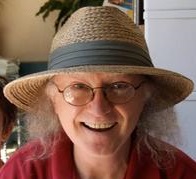

The simplest and fastest of signal pathways is seen in the case of signals whose receptors are gated ion channels. Gated ion channels are made up of multiple transmembrane proteins that create a pore, or channel, in the cell membrane. Depending upon its type, each ion channel is specific to the passage of a particular ionic species. The term "gated" refers to the fact that the ion channel is controlled by a "gate" which must be opened to allow the ions through. The gates are opened by the binding of an incoming signal (ligand) to the receptor, allowing the almost instantaneous passage of millions of ions from one side of the membrane to the other. Changes in the interior environment of the cell are thus brought about in microseconds and in a single step.  This type of swift response is seen, for example, in neuromuscular junctions, where muscle cells respond to a message from the neighboring nerve cell. The nerve cell releases a neurotransmitter signal into the synaptic cleft, which is the space between the nerve cell and the muscle cell it is "talking to". Examples of neurotransmitter signal molecules are acetylcholine and serotonin, shown in Figure 8.2.2.
This type of swift response is seen, for example, in neuromuscular junctions, where muscle cells respond to a message from the neighboring nerve cell. The nerve cell releases a neurotransmitter signal into the synaptic cleft, which is the space between the nerve cell and the muscle cell it is "talking to". Examples of neurotransmitter signal molecules are acetylcholine and serotonin, shown in Figure 8.2.2.  When acetylcholine molecules are released into the synaptic cleft (the space between the pre- and post-synaptic cells) they diffuse rapidly till they reach their receptors on the membrane of the muscle cell. The binding of the acetylcholine to its receptor, an ion channel on the membrane of the muscle cell, causes the gate in the ion channel to open. The resulting ion flow through the channel can immediately change the membrane potential. This, in turn, can trigger other changes in the cell. The speed with which changes are brought about in neurotransmitter signaling is evident when you think about how quickly you remove your hand from a hot surface. Sensory neurons carry information to the brain from your hand on the hot surface and motor neurons signal to your muscles to move the hand, in less time than it took you to read this sentence!
When acetylcholine molecules are released into the synaptic cleft (the space between the pre- and post-synaptic cells) they diffuse rapidly till they reach their receptors on the membrane of the muscle cell. The binding of the acetylcholine to its receptor, an ion channel on the membrane of the muscle cell, causes the gate in the ion channel to open. The resulting ion flow through the channel can immediately change the membrane potential. This, in turn, can trigger other changes in the cell. The speed with which changes are brought about in neurotransmitter signaling is evident when you think about how quickly you remove your hand from a hot surface. Sensory neurons carry information to the brain from your hand on the hot surface and motor neurons signal to your muscles to move the hand, in less time than it took you to read this sentence! 
This page titled 8.2: Ligand-gated Ion Channel Receptors is shared under a CC BY-NC-SA 4.0 license and was authored, remixed, and/or curated by Kevin Ahern & Indira Rajagopal via source content that was edited to the style and standards of the LibreTexts platform.